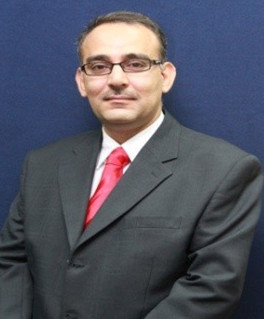Abstract—The main problem in studying the feasibility of solar systems is the enormous gap between theory and experimental radiation intensity, so to get accurate results there is a need for studying energy production in the site of the system empirically. In this study, the energy production of both fixed PV panel system and the system with single-axis tracking were empirically evaluated in Medina, Saudi Arabia. The two systems had the same 270 Wp PV panel. The fixed system was tilted by 23.5 degrees, and the single-axis tracker was tilted by 26 degrees. Both systems had an azimuth angle of zero degrees. A closedloop three-points controller was used to control the tracker with 120 degrees rotation range. The two systems operated simultaneously in July, and the data were collected for 14 days. The empirical results showed that the tracker increased the generated energy by 48.5% during the testing period. As a comparing method, a modified ASHRAE model was used to estimate the increase in the panel's energy output with and without the single-axis tracker, and RMSE and MBE were calculated. It's been found that the experimental energy generation is 10%, 5% less than the estimation of the modified model for the fixed system and the tracking system, respectively. Finally, based on the analysis, it's been estimated that the singleaxis tracker will increase the generated energy by 22.5% yearly in Medina.
Index Terms—Empirical evaluation, solar tracking, photovoltaic system, solar radiation modelling.
R. Alahmdi is with the Physical Sciences and Engineering Division at King Abdullah University of Science and Technology, 23955 Thuwal, Saudi Arabia (e-mail: raed.alahmdi@kasut.edu.sa).
A. Alansari is with the HSE Department at AMSteel LLC, 23425 Jeddah, Saudi Arabia (e-mail: Abdulrahman.alansari@amsteel.com).
M. Abualkhair is with the Mechanical Engineering Department at King Fahd University of Petroleum and Minerals, 31261 Dhahran, Saudi Arabia (e-mail: g202007760@kfupm.edu.sa).
A. Almoghamisi is with the Engineering Department M.M.Alharbi & Partners Co. Ltd, Jubail, Saudi Arabia (e-mail: dhami1.1997@gmail.com).
[PDF]
Cite:Raed Alahmdi, Abdulrahman Alansari, Mohanad Abualkhair, and Abdulrahman Almoghamisi, "Empirical Evaluation of Fixed and Single-Axis Tracking Photovoltaic System: Case of ASHRAE Solar Radiation Modelling for Medina, Saudi Arabia," Journal of Clean Energy Technologies vol. 9, no. 3, pp. 33-38, 2021.


